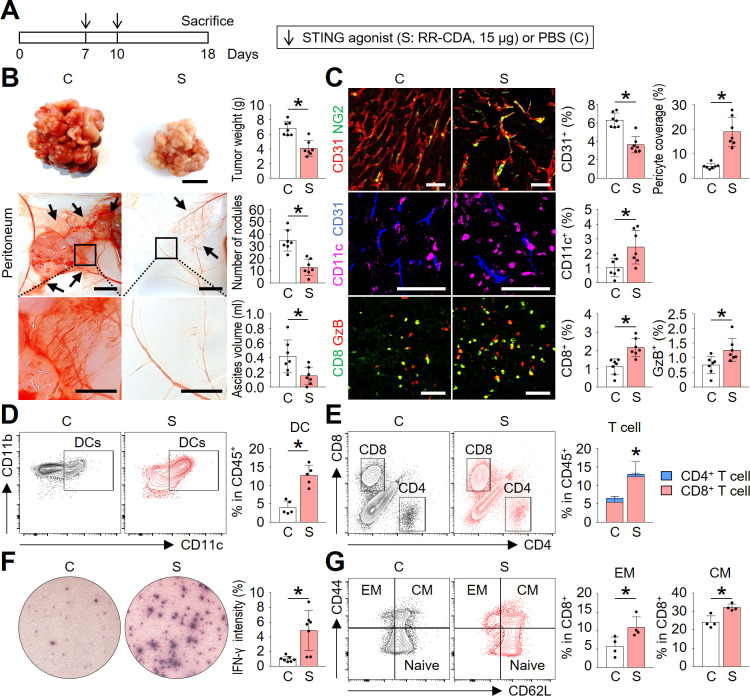Figure 3.
STING activation normalized tumor angiogenesis and immunity during peritoneal dissemination of colon cancer. Mice with PCCC were intraperitoneally treated with phosphate-buffered saline (PBS) or STING agonist. (A) Schematic diagram depicting the treatment schedule. (B) Representative images and comparisons of peritoneal tumor nodules, blood vessels, and malignant ascites in the PBS- or STING agonist-treated mice. (C) Representative images and comparisons of CD31+ blood vessels, NG2+ pericyte, CD11c+ dendritic cells, CD8+ T cells, and granzyme B (GzB) within peritoneal tumors. (D) Representative flow cytometric plot and comparison of tumor-infiltrating CD11c+ dendritic cells. (E) Representative flow cytometric plot and comparison of tumor-infiltrating CD4+ or CD8+ T cells. (F) Representative images and comparison of IFN-γ ELISPOT in splenocytes. (G) Representative flow cytometric plot and comparison of effector memory (EM, CD44+CD62L−) and central memory (CM, CD44+CD62L+) T cells within the spleen. Data are pooled from two experiments with n=7 per group (B, C, E, F), n=5 per group (D) and n=4 per group (G). Values are shown as the mean±SD. *P<0.05 vs control; Two-tailed Student’s t-test. Scale bar=10 mm (B, top), 5 mm (B, middle), 2 mm (B, bottom), and 100 µm (C). IFN-γ, interferon-γ; PCCC, peritoneal carcinomatosis of colon cancer; STING, stimulator of interferon genes.

